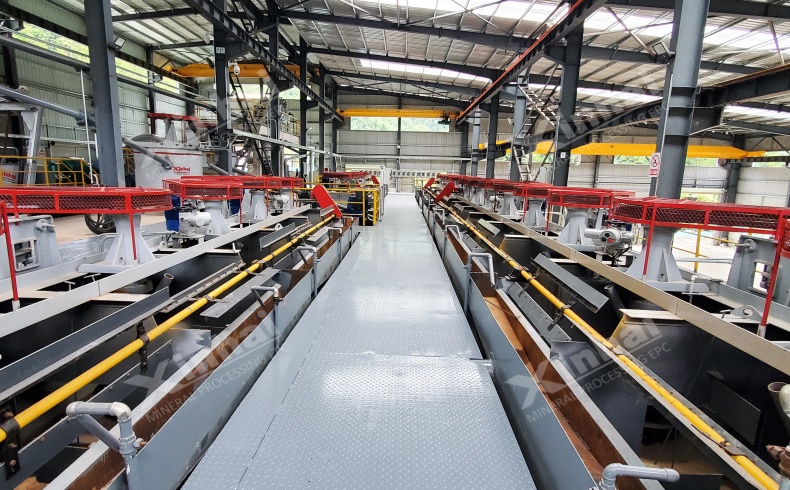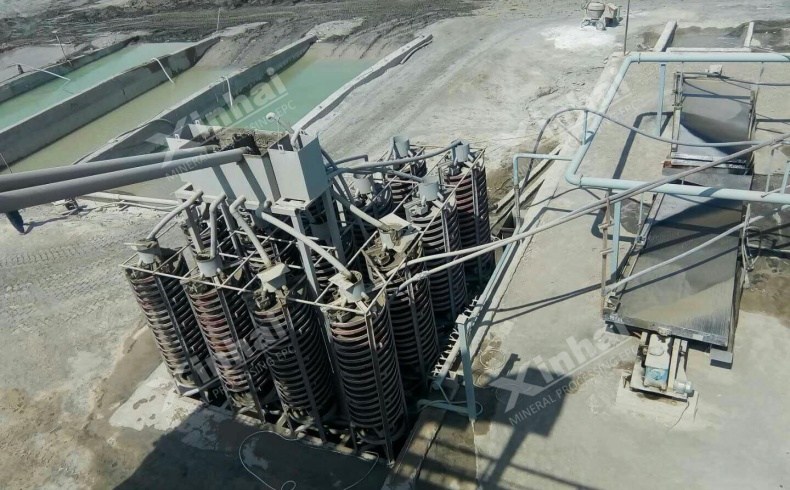If you want to know more information (such as product/process price, etc.), please contact us 24-hour telephone
Chromium, a critical element for stainless steel, aerospace alloys, and green technologies, is primarily sourced from chromite ore (FeCr₂O₄). With global demand projected to grow at 4.2% CAGR (2023–2030), optimizing extraction methods is vital. This guide explores traditional and cutting-edge chrome extraction techniques, regional adaptations, and sustainable practices.
Geological Formation and Types
Chromite deposits form in ultramafic rocks like peridotites and serpentinites. Key ore types include:
Stratiform Deposits: Layered intrusions (e.g., Bushveld Complex, South Africa) with high-grade Cr₂O₃ (40–55%).
Podiform Deposits: Smaller, irregular masses (e.g., Turkey, Albania) with variable grades (25–45% Cr₂O₃).
Lateritic Deposits: Weathered chromite in tropical regions (e.g., India’s Sukinda Valley).
Ore Characterization
Chemical Composition: Cr₂O₃ content, Cr/Fe ratio (>2.5 for metallurgical use), and gangue minerals (e.g., silicates, magnetite).
Liberation Size: Chromite grains typically liberate at 0.1–1.0 mm.
A. Physical Beneficiation Methods
1. Gravity Separation
Principle: Density differences between chromite (4.5–4.8 g/cm³) and gangue (2.6–3.2 g/cm³).
Equipment:
Shaking Tables: Effective for fine particles (<1 mm).
Spiral Chute: Low-cost option for high-tonnage operations.
Recovery: 70–85%, depending on ore homogeneity.
2. Magnetic Separation
Principle: Chromite’s weak magnetism (0.5–1.0 A/m) vs. strongly magnetic gangue (e.g., magnetite).
Equipment:
Low-Intensity Magnetic Separators (LIMS): Remove magnetite.
High-Gradient Magnetic Separators (HGMS): Recover fine chromite.
Use Case: South African UG2 reefs (chromite-PGM ores).
3. Froth Flotation
Principle: Hydrophobic chromite adhesion to air bubbles using reagents (e.g., fatty acids).
Challenges: Silicate gangue interference; requires pH control (8–10).
Efficiency: 60–75% recovery for finely disseminated ores.

B. Chemical Extraction Methods
1. Alkaline Roasting-Leaching
Process:
A. Roast chromite with Na₂CO₃ at 1,100°C to form Na₂CrO₄.
B. Leach with water to extract chromium.
Drawback: High energy consumption and sodium waste.
2. Acidic Leaching
Process: Use H₂SO₄ or HCl to dissolve chromite, followed by precipitation.
Applications: Low-grade ores (<30% Cr₂O₃).
Innovation: Hybrid bioleaching with Acidithiobacillus bacteria (pilot-stage).
A. Sensor-Based Sorting (XRT/XRF)
How It Works:
X-Ray Transmission (XRT): Detects atomic density differences.
X-Ray Fluorescence (XRF): Identifies elemental composition.
Benefits:
Pre-concentrate ore pre-crushing, reducing energy use by 30%.
Achieve 95% purity in high-grade South African chromitite.
B. High-Pressure Grinding Rolls (HPGR)
Advantages Over Ball Mills:
Energy Savings: 20–35% lower kWh/t.
Finer Grind: Produces micro-cracks for improved liberation.
Case Study: Kazakhstan’s Voskhod Mine increased recovery by 12% with HPGR.
C. Tailings Reprocessing
Techniques:
Magnetic Scavenging: Recover chromite from old tailings (e.g., South Africa’s 600 Mt legacy waste).
Hydrometallurgy: Extract chromium from ultrafine tailings using ion exchange.

A. South Africa (Stratiform Deposits)
Dominant Method: Gravity + magnetic separation for high-grade ore.
Innovation: Co-processing chromite and PGMs in the Bushveld Complex.
B. India (Lateritic Deposits)
Challenges: High clay content, seasonal monsoons.
Solution: Scrubbing + attrition mills to remove sticky gangue.
C. Turkey (Podiform Deposits)
Focus: Hand-sorting and jigs for small, high-Cr/Fe ratio ores.
A. Waterless Processing
Dry Stack Tailings: Filter presses reduce water use by 80%.
Dust Suppression: Mist cannons and enclosed conveyors in arid regions.
B. Renewable Energy Integration
Solar-Hybrid Plants: South African mines offset 40% of grid power with PV.
Waste Heat Recovery: Capture smelter heat for ore drying.
C. Circular Economy Models
Chromium Recovery from Slag: E.g., ferrochrome slag (8–12% Cr₂O₃) reprocessed via magnetic separation.
Byproduct Utilization: Use serpentine gangue for CO₂ sequestration (mineral carbonation).
A. AI-Driven Process Optimization
Digital Twins: Simulate extraction workflows to minimize reagent use.
Predictive Maintenance: IoT sensors on crushers and separators.
B. Hydrogen Reduction
Direct Chromite Reduction: Use H₂ instead of coke in ferrochrome production (cuts CO₂ emissions by 70%).
C. Nanochromite Applications
High-Purity Cr₂O₃ Nanoparticles: For advanced coatings and batteries.
Conclusion: Balancing Efficiency and Ethics
Chrome extraction is evolving from brute-force methods to smart, sustainable systems. By adopting sensor-based sorting, dry processing, and renewables, miners can meet ESG targets while boosting profits.
Xinhai Mining can provide mining services with a daily processing capacity of no less than 100 tons.